July,30 (18),
The Battle At Kliastitsy,
July,31 (19)
The Unsuccessful Battle Of General Kulnev's Forces At Boyarshina,
August, 1 (July,20)
(From "The Soviet Military Encyclopaedia", Volume 4, Moscow, 1976;
O.K.Parkhaev, O.Papkov "The Russian Army of 1812 Year", Moscow, 1987)
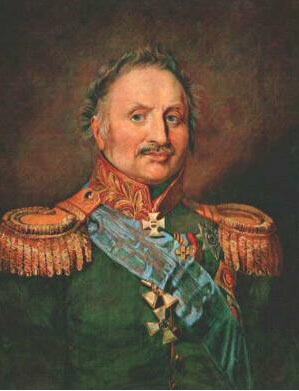 General Prince Wittgenstein
General Prince Wittgenstein by Dow |
The Russian Corps of Prince Wittgenstein had the task to cover the ways to Riga and St.Petersburg and to paralyze part of the Napoleonic forces with his 17 thousand men and 108 guns, The French Corps of Marshal Oudinot that acted against the Russians on this part of the front were 29 thousand men and 114 guns.
The Corps of Marshal Oudinot was sent by Napoleon to cover his left flank and to act against Wittgenstein. Marshal Macdonald was to act in co-operation with Oudinot. His Corps (32.5 thousand men) laid siege to the city of Riga.
In the middle of July, the troops of Oudinot crossed the Dvina river near Polotsk and moved to Sebezh. After getting the information about the movements of French troops, Wittgenstein decided to take Oudinot on the flank. He left a detachment of three housand men at the city of Dinaburg to fight a delaying action against Macdonald's forces from Yakobstadt, and on July,28 he concentrated his Corps near the village of Rostitsa and led his forces towards the town of Kliastitsy. By that time, Marshal Oudinot had already captured the town, but did not have exact information about the Russian troop position and so sent out a regiment for reconnaissance to the road to Sebezh. Legrand's Division was sent to Yakubovo.
On July,30 (18) the vanguard of Wittgenstein's Corps under the command of General Kulnev attacked the French at Yakubovo in spite of their superior forces. During the battle Verdie's Division came to the aid of Legrand, but two Russian chasseur regiments and a horse artillery company came to reinforce Kulnev's forces.
The Russians attacked again the next morning . Marshal Oudinot moved his reserves against the centre and left flank of the Russian troops, but the Russians repulsed them successfully with heavy and accurate artillery fire, further confusing the French. The Russians troops then attacked the French swiftly along the whole line, overrunning them and hurled them back to Kliastitsy.
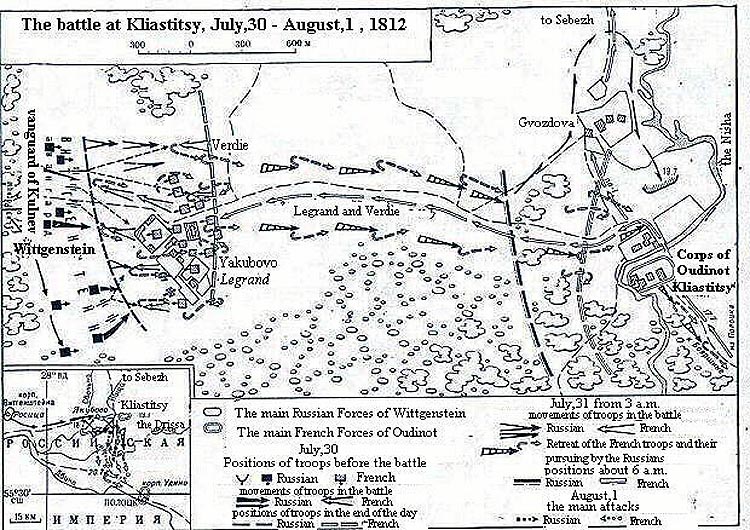
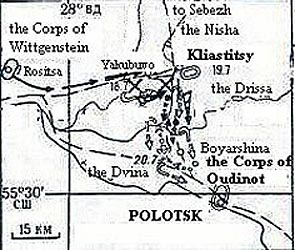
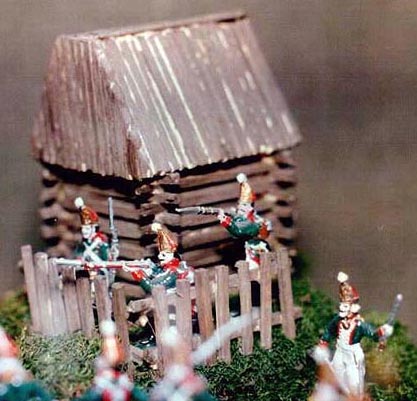 Grenadiers of the Pavlovsky regiment at Kliastitsy
Grenadiers of the Pavlovsky regiment at Kliastitsya fragment of diorama by Helen and Nick Mozak |
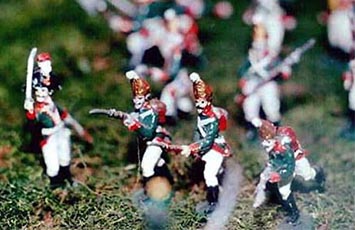 Grenadiers of the Pavlovsky regiment at Kliastitsy a fragment of diorama by Helen and Nick Mozak |
The attempt of the French to organize an active defense on the right bank of the Nisha river had failed.
In the battle at Kliastitsy the 2nd battalion of Pavlovsky's grenadier regiment distinguished itself most of all. The grenadiers "passed under the strong enemy's fire along the flaming bridge" and forced the French out of the town with bayonets.
The Pavlovsky regiment had a glorious history and battle tradition. Men who were tall, brave, and skilled in military service, were chosen for the grenadier detachments. Grenadiers usually protected the flanks of the regular troops. They were armed with smooth-bore guns and half-sabres, and wore a high cap - "mitra" with a copper frontal part with the double-headed eagle on it. At the beginning of the 19th century in the other grenadier regiments, the mitre was replaced by a shako. But these changes didn't concern the Pavlovsky regiment, because Alexander I wanted to reward "courage and bravery of the regiment in many battles" and ordered it to retain the caps "in such condition as they were after the battle, and if some of them are damaged, it'll be the memorial of distinguished courage..."
The hastily retreating French troops were pursued by the detachment (the Grodno Hussar regiment) of General Kulnev. But on August,1 this detachment that had broken away from the main forces was attacked by the much larger French forces, the Russians sustained heavy losses and had to retreat.
J.P.Kulnev was the first Russian general killed in the war of 1812. he was mortally wounded in this battle by a cannon-ball. The hero was buried on the bank of the Drissa river, not far from his birth-place. Upon of his death, Napoleon wrote to France: "General Kulnev, one of the best officers of the Russian cavalry was killed".
The troops of Marshal Oudinot tried to take the offensive to Kliastitsy, but they were defeated by the main forces of Prince Wittgenstein and retreated to Polotsk. As a result, the Corps of Marshal Oudinot was beaten and it's offensive to St.Petersburg had failed.
The successful actions of Prince Wittgenstein forced Napoleon to send the Bavarian Corps of Marshal Sain-Syr (13 thousand men) to support Oudinot, and this weakened his forces on the main offensive.

French and Swiss Line Infantry at Kliastitsy
a fragment of diorama by Helen and Nick Mozak
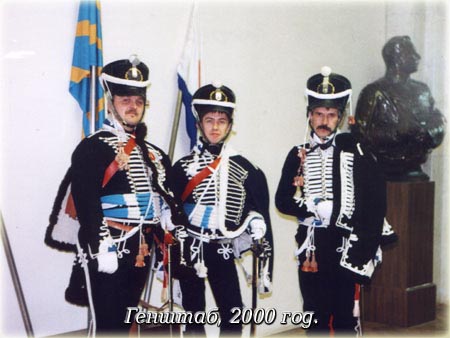
Hussars of the Grodno regiment
modern re-enactment
from the site of The Grodno Hussar Regiment re-enactment group